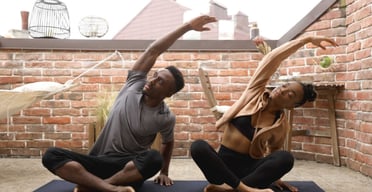If you haven’t tried restorative yoga, why not? Do you know what you’re missing out on? Restorative yoga may be the easiest way to calm the nervous system and release stress held in the body. I was introduced to it over 10 years ago through a training with Kripalu, and I have been hooked ever since.
Restorative yoga is all about slowing down. The deeply personal practice focuses on self-pacing and feeling, with poses often lasting over five minutes. With each breath, yogis are invited to check-in with their body and find a place that feels right. Sounds good, doesn’t it?
Alexia Dellner of Purewow.com outlined 8 essential restorative poses in her 2019 article, The 8 Best Restorative Yoga Poses for Stress Relief. I’ve included my favorite 3 for you here. I encourage you, wherever you are, to take this opportunity to restore your body and mind before continuing through your day.
PUREWOW
1. CHILD’S POSE
Start on your hands and knees while centering your spine and looking down. Slowly spread your knees apart while keeping your toes together and leaning back on your heels. Push your arms out in front of you, letting your forehead hit the floor or mat. Breath in and out for as long as the pose is comfortable.
A favorite of mine, the child’s pose promotes peaceful reflection while inviting your hips, thighs, and ankles to stretch.
2. HAPPY BABY POSE
Start on your back. With a deep breath, bring your knees to your chest and pause. On the next breath, grab the outer part of your feet with your hands, pulling upwards and placing your knees near your armpits. If you’re able, rock side to side while breathing deeply.
A yoga session is never complete without this comforting pose. From my own experience, this is best done after a stressful work day.
3. LEGS ON A CHAIR POSE
Start by sitting in front of your chair and gently roll to your side while keeping your knees bent. Next, roll to your back and push your legs up onto the chair. You should allow the chair to support the weight of your legs, let it give you a break. While relishing in this pose, be sure to keep your toes pointed and your core relaxed for full benefits.


